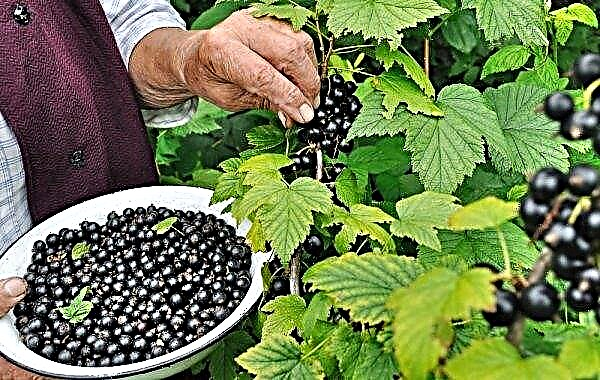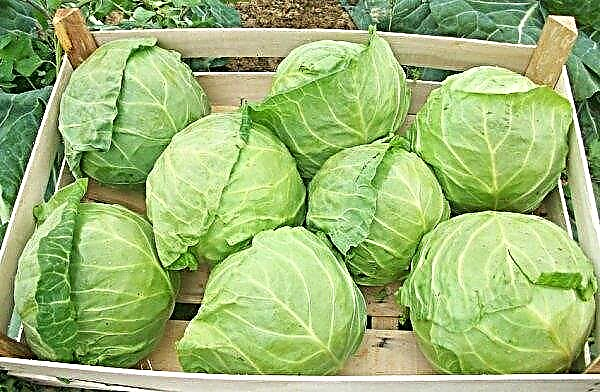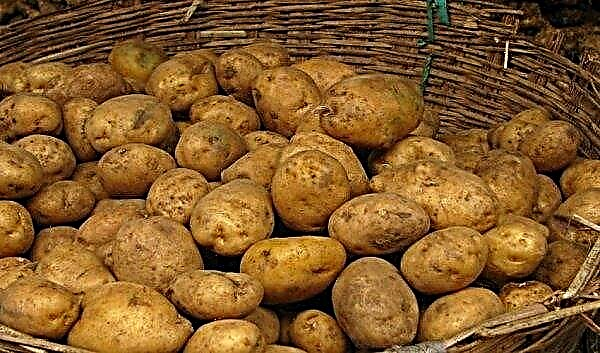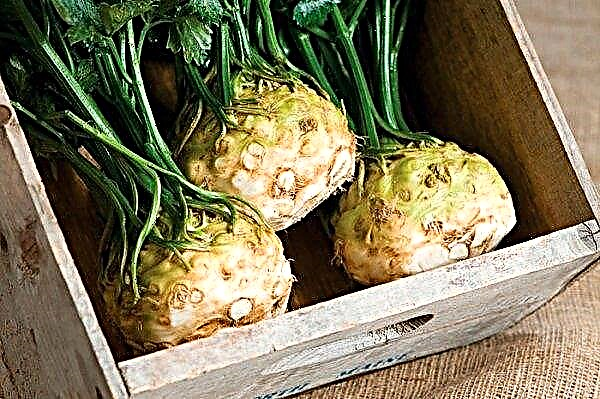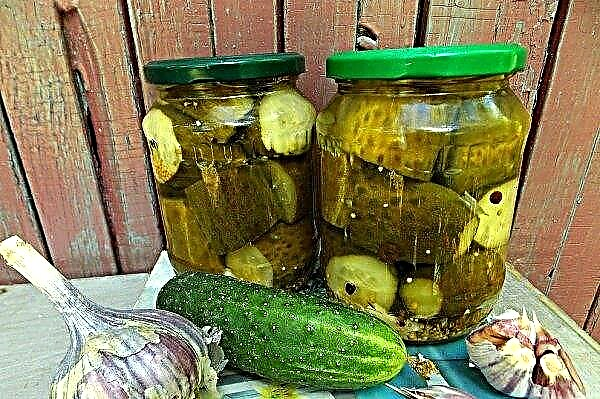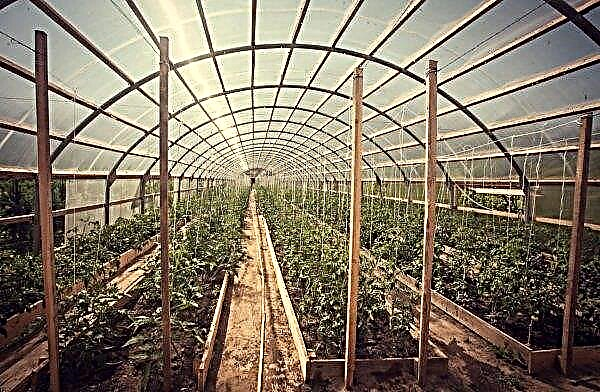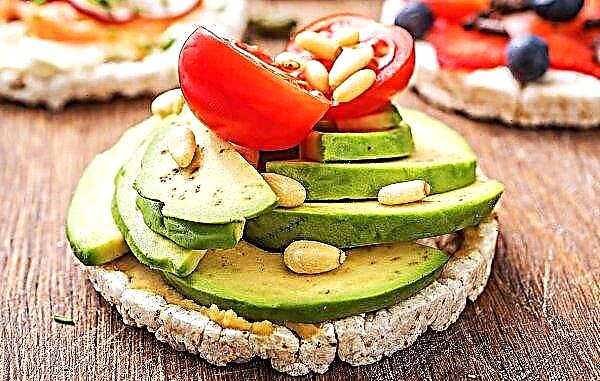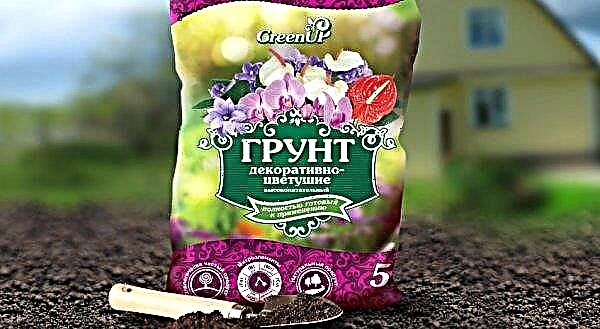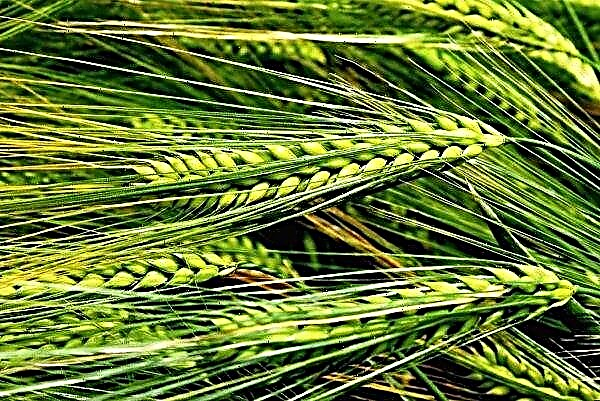For lovers of healthy and delicious food, cabbage plays one of the main roles, due to the high content of vitamins and minerals. In fermented form, these properties not only multiply, but also remain for up to 10 months. The recipe for this treatment of the autumn harvest in each family is unique and inimitable. The article discusses the most popular recipes for salting in a hot way.
What is a hot salting method?
The hot method allows you to get ready pickles in a short time. The principle of salting is to preserve using a special brine. They are poured vegetables after full boiling and rolled into clean jars, having previously sterilized them. Thus, nothing will harm conservation, and taste will not go bad. Experienced housewives also add vinegar, which makes the cooking process more efficient.
Did you know? Sour cabbage was invented in China. Back in the 3rd century BC e. sauerkraut was soaked by soaking in rice wine, and it fed the builders of the Great Wall of China.
Selection and preparation of ingredients
In order to make the dish tasty and crispy, it is worth remembering several important rules of the preparation process:
- Choose varieties that have been touched by freezing. Late harvest ripening from September to November is best.
- Pay attention to the shape of the head of cabbage. If it is a little flattened on top, then such a vegetable is better suited for salting.
- Before cooking, it is important to taste the cabbage. It should be sweet, this will ensure proper fermentation.
- To get a good dish, you need to choose the right salt. It is better to opt for coarse sea salt, do not use iodized. It is important that the salt is clean and free from additives.
- If ordinary vinegar is used for salting, then it is better to replace it with apple or wine. You can also use lemon, plum, apple juice (preferably Antonovka variety).
- Remove spoiled, dirty, green and top leaves from the head. Following you can do shredder. It is important to slightly squeeze the leaves after cutting, so that the juice comes out.
- The preparation of carrots, beets, onions, zucchini, pumpkin and other products should be carried out based on the recipe for preparation.
- Vegetables are tightly packed in a jar to the very top.
 The marinade should completely cover the ingredients, this will preserve the aroma and mouth-watering appearance of the product. Many cooks use oppression for proper salting.
The marinade should completely cover the ingredients, this will preserve the aroma and mouth-watering appearance of the product. Many cooks use oppression for proper salting.
Hot Cabbage Recipes
Experienced housewives make yeast in juice or brine, stand for several days or choose a quick method of preparation. There are many recipes, but every housewife should know about the main ones.
Quick salting with vinegar

160 min
Energy value per 100 g:
- Finely chop white cabbage.
- Grind carrots with a grater.
- Combine the prepared vegetables in a pan.
- Add sugar, vinegar to the boiling water, add salt and boil again.
- Pour the vegetables with the prepared brine, cover with a lid or a plate, and establish oppression.
- As soon as the fermentation process is over, the cabbage is ready for use and packaging.

Important! To avoid the bitter taste, the prepared composition must be pierced daily with a fork. This is done until the brine has stopped ceasing to roam.
With vinegar and oil

160 min
vegetable oil
0.5 tbsp. l
Energy value per 100 g:
- Chop the cabbage.
- Grind carrots on a medium grater.
- Chop the garlic into thin rings.
- Put all the ingredients in a capacious container.
- Combine salt, sugar, vinegar and oil with boiling water.
- Cover the vegetables with this marinade, close tight and stand for 12 hours.

With onions and garlic

190 min
vegetable oil
75.5 g
Energy value per 100 g:
- Chop the cabbage and completely pour boiling water over it.
- Chop onion and herbs (can be dried).
- Fry chopped ingredients in a pan heated with oil.
- While the onion with greens is browned, you need to drain all the water from the cabbage.
- Grind garlic in any convenient way.
- Stir all the ingredients in a bowl and salt.
- Tamp the mixture into a container and put under oppression for 3 days. It is important to cover it with a towel and put in a dark place.
- At the end of the period, salted cabbage can be transferred to the refrigerator or served.

Did you know? In West Virginia (USA), the process of making sauerkraut is prohibited due to the characteristic smell. Police may imprison miasma distributors due to threats to the well-being of their neighbors.
Storage methods
After starter fermentation, it is necessary to choose a place for storage.

The correct capacity and conditions will help not only to extend the shelf life, but also to preserve the taste and aroma:
- If possible, it is better to store the product in oak barrels. An ideal temperature is considered to be from -1 to + 4 ° C. It is better not to lower the stronger temperature, this will lead to the loss of vitamins. Such temperature readings will help to be maintained in the cellar or refrigerator.
- If the dish is fermented in a small amount, it can be stored in a plastic container or in a bucket of food. The main thing is that the cover is tightly closed and air does not enter. The storage area should not be lit by sunlight, it is better if it is completely dark.
- For storage throughout the winter, glass jars are one of the best options. Cans must undergo home sterilization before use. After tamping, the vegetable must be poured with a large amount of brine. Shelf life reaches 30-40 days.
Important! If the temperature during storage of winter billets exceeded +10° C, it is better not to use them. When eating such sauerkraut, there is a risk of poisoning.
Quick hot salting is one of the easiest snacks to prepare. Unlike other treatments, sauerkraut retains better beneficial properties and vitamins. If you follow the recommendations exactly, you can not only please your family with a delicious dish, but also stock up on blanks for the winter.

